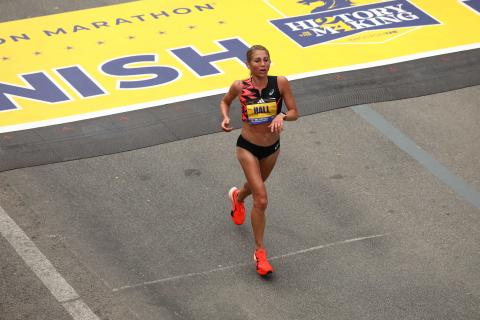
Running a half marathon is a significant achievement, and it's never too late to start training for one—just ask Karen Bei, the mother of Sara Hall, the second-fastest U.S. marathoner of all time. Despite not showing much interest in running until her 50s, Bei successfully trained for and completed her first 13.1-mile race, guided by her daughter’s expertise. Sara Hall's training plan, designed with her mom in mind, is now a go-to resource for anyone looking to prepare for a half marathon, whether you're a seasoned runner or someone new to the sport.
Before diving into half marathon training, it's essential to build a solid running base. Bei's journey began with training for 10Ks before tackling the half marathon distance, a strategy that kept her healthy and maintained her enthusiasm. As Sara Hall emphasizes, “It’s never too late to start running, and anyone can do it as long as you build into it gradually.” This gradual buildup helps prevent burnout and reduces the risk of injury, ensuring you stay on track toward your goal.
Life happens, and training plans can sometimes get derailed by unforeseen circumstances. The key is to not let a missed run or a rough week throw you off course. Hall advises against cramming missed workouts into a shortened period, as this can lead to overtraining. Instead, pick up where you left off and, if necessary, adjust your goals. It’s better to arrive at the starting line healthy and prepared, even if that means choosing a different race date.
Having someone in your corner can make all the difference in your training journey. For Bei, that person is her daughter, Sara Hall, who provides encouragement and celebrates her mom's milestones. Whether it’s a friend, a family member, or a coach, finding a cheerleader who understands your running journey can keep you motivated and accountable.
“My mom texts me when she has a good run that she’s excited about,” Hall shares. “Everyone needs someone who understands their running, who they can celebrate with when they hit a milestone.”

Training for a half marathon is as much a mental challenge as it is a physical one. Before you begin, it’s helpful to reflect on why you want to take on this challenge. Sara Hall encouraged her mom to write down her reasons for running, a practice that has proven invaluable during tough moments in training. Revisiting your “why” can provide motivation and help you push through difficult days.
“It’s been neat to see running be a force of empowerment in my mom’s life, just as it has been in my own and my daughters’ lives,” Hall says.
As with any intense physical activity, it’s crucial to listen to your body. Hall’s training plan includes ample recovery time and incorporates cross-training options, such as swimming, which Bei enjoys. The plan’s focus on effort-based speed workouts allows for flexibility—some days you’ll feel faster, and other days you may need to take it easy. The key is consistency over the 14-week period, not perfection in every single run.

Training with others can be a great motivator, but it’s important to stay true to your own pace. While Sara Hall enjoys running with others, Bei prefers to train alone to ensure she maintains her own rhythm. Whether you choose to run solo or with a group, the most important thing is finding what works best for you and sticking with it.
Hall’s training plan uses terms like “easy,” “faster,” and “slow,” which might take some time to get used to. The “easy” pace is one where you can comfortably carry on a conversation, and as your fitness improves, your paces will naturally adjust. This effort-based approach helps runners of all levels tune into their bodies and train effectively without the pressure of hitting specific times.
Sara Hall’s half marathon training plan is a thoughtful, flexible approach designed for runners of all ages and experiences. Whether you’re like Karen Bei, starting your running journey later in life, or a seasoned runner looking for a new challenge, this plan offers the guidance and encouragement needed to achieve your 13.1-mile goal. Remember to build gradually, listen to your body, and keep your reasons for running close to heart—success will follow.
For more content find us via the app store:
Discover More Content





